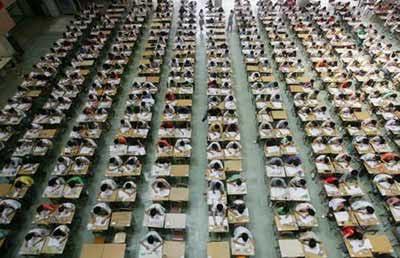Passing Probability Problem

Some number of students are appearing for a very difficult examination. Based on who arrives first, the students are given roll numbers as 1,2,3,.. and so on.
It is such that the student with roll number 1 has a probability of passing, the student with roll number 2 has a probability of passing and so on.
What is the minimum number of students needed to ensure a greater than 99.9% chance that at least one student passes? (In other words, if ‘P’ is the probability that at least one student passes, what is the minimum number of students needed to make sure %
The answer is 1000.
This section requires Javascript.
You are seeing this because something didn't load right. We suggest you, (a) try
refreshing the page, (b) enabling javascript if it is disabled on your browser and,
finally, (c)
loading the
non-javascript version of this page
. We're sorry about the hassle.
The events " at least one student passes" and "no student passes" are complementary, so P[at least one student passes] = 1 - P[no student passes]. Then
P[at least one student passes] > 9 9 . 9 % ⟹ 1 - P[no student passes] > 9 9 . 9 % ⟹ P[no student passes] < 0 . 1 % = 1 0 0 0 1
We're given that the k th student has a probability of k + 1 1 of passing, i.e. a probability of k + 1 k of failing. So
P[no student passes] < 1 0 0 0 1 ⟹ P[student 1 fails AND student 2 fails AND student 3 fails AND .... AND student n fails] < 1 0 0 0 1 ⟹ 2 1 ⋅ 3 2 ⋅ 4 3 ⋅ 5 4 ⋅ . . . . ⋅ n + 1 n < 1 0 0 0 1 ⟹ n + 1 1 < 1 0 0 0 1 ⟹ n + 1 > 1 0 0 0
so minimum number of students needed to make sure P > 9 9 . 9 % is 1 0 0 0